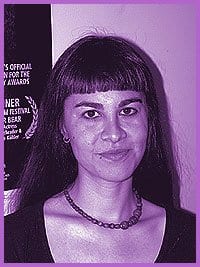With the arrival of summer comes the largest linked series of festivals on the planet. Pride celebrations have grown astronomically in the past decade from small community gatherings to week-long celebrations. According to Russell Murphy, co-president of InterPride, the event is now celebrated 178 times in 25 countries worldwide. These events mobilize an estimated 18 million people, a number that grows annually.
With this increase has come a simultaneous boost in corporations marketing their wares to annual Pride celebrations. The Pride circuit offers a plethora of ready-made events in which to market almost any product. Every summer, corporate Canada comes out of the closet and taps into the chain-link of Pride festivals, profiting from queer communities across the country.
Statistics have proven that injecting sponsorship dollars into gay Pride festivals has concrete dividends. Queer consumers are among the most loyal, especially where fashion and alcohol brands are concerned. At the same time, it is commonly held that companies advertising products to gay and lesbian consumers should demonstrate effective corporate citizenship by supporting lesbian and gay causes outside of one-off Pride showcases.
To ensure this, Pride organizations are increasingly introducing corporate codes of conduct. These standards stipulate that businesses sponsoring Pride should have sexual orientation and gender identity anti-discrimination policies. Other areas are same-sex benefits plans including adoption assistance, child care benefits, sick leave for partner care, bereavement leave and pension plans. Even further is the call for these companies to contribute to non-profit advocacy organizations, such as AIDS organizations, social housing and community health clinics.
Rumours of the lucrative nature of the gay market began circulating in the early 1990s. Without quantifiable statistics though, the enigmatic pink dollar still remains elusive to most marketers. Increasingly, ad campaigns feature gay consumers. This is hardly surprising given that advertising in gay media is among the fastest growing niche in marketing.
But according to Tyrrel Ignatius, a gay marketing consultant in Toronto, “Placing advertisements in gay magazines doesn’t necessarily mean that companies are marketing to gay people. Businesses need to take on marketing strategies to enter our niche market on an ongoing basis.”
Part of this niche marketing is smart, targetted campaigns that include what Ignatius terms gay graphic design. This could involve anything from rainbow colours in an advertisement to presenting images of two men or two women using a company’s cell phone, car or financial services. Whatever the design, it requires a direct appeal to our community.
“Gay consumers always remember when products are targetted towards them. The advertisement must say: we are with you. Yet, there continues to be a lack of understanding when it comes to continuously marketing to us.”
In 1999, Kalorama Information did a market study that set gay buying at $340-billion in the US. They predicted that this would increase to $450-billion by 2004.
“Presently, the overall value of our market is unknown, although its worth is recognized. LGBT consumers are not bargain-hunters. We don’t worry about prices. We go for quality,” states Ignatius. “But many companies are reluctant to go public with an LGBT campaign, because they feel there will be a backlash from the mainstream. As things stand now, the Canadian business norm is for corporations to play follow the leader.”
This kind of niche marketing to the gay community, however, is not new. In the mid-eighties, Andy Warhol queered Absolut Vodka’s branding. The iconic artist’s dramatic and colourful depiction of the well-known vodka bottle is one of the best marketing campaigns in history. Warhol then recommended Keith Haring. Haring’s art with its pop-social commentary on homosexuality, race and AIDS, also became a marketing tool for Absolut, and later, for BMW.
This begs the question: what came first, the chicken or the egg? If Absolut used Andy Warhol to brand their product, perhaps it was more about getting in with the chic gay community rather than vice versa. There has always been an association between the gay community and the arts, the avant-garde and the intelligentsia. Indeed, advertisers not only want us, but they also need us.
When Vancouver’s VanCity, Canada’s largest credit union, launched its same-sex ad campaign, the Vancouver-based financial institution saw their customer base increase substantially. Half of this new clientele were from the gay community, while the other half were discerning straight customers who wanted to invest their capital in a socially conscious institution. This business plan proves that investing in the gay community renders large dividends.

 Why you can trust Xtra
Why you can trust Xtra


